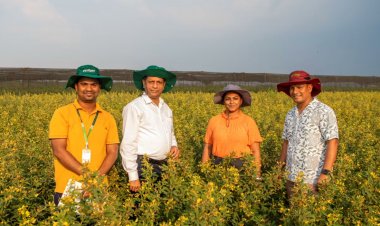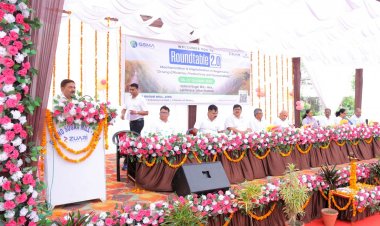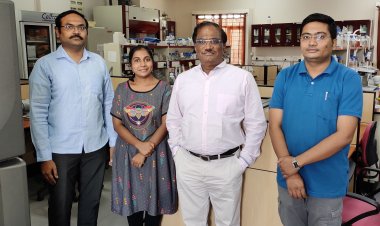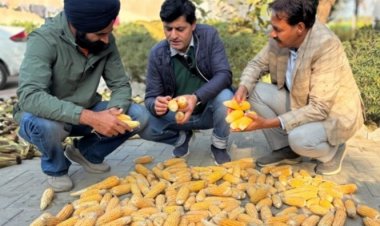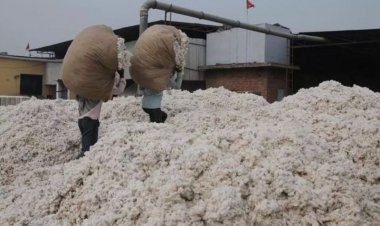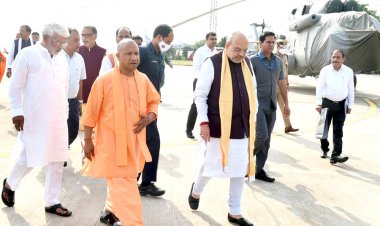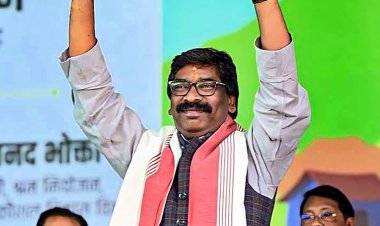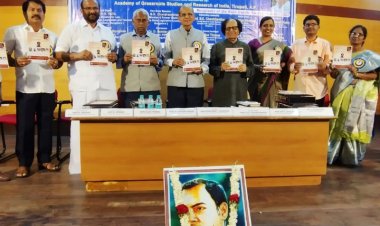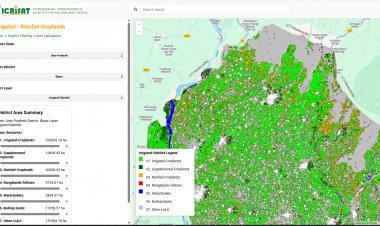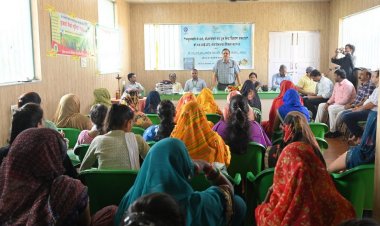Need for interdisciplinary and global approach in agricultural research at a time when technology is getting complex: Prof. Ramesh Chand, Member, Niti Aayog
Prof. Ramesh Chand, Member, Niti Aayog, says that technology is getting complex in agriculture and modern science is increasingly being used in this sector. In such a scenario, it is imperative that the agricultural research institutes collaborate with the IITs and other institutes that are working on new technology and adopt an interdisciplinary and global approach to meet the technological needs of the agriculture sector.
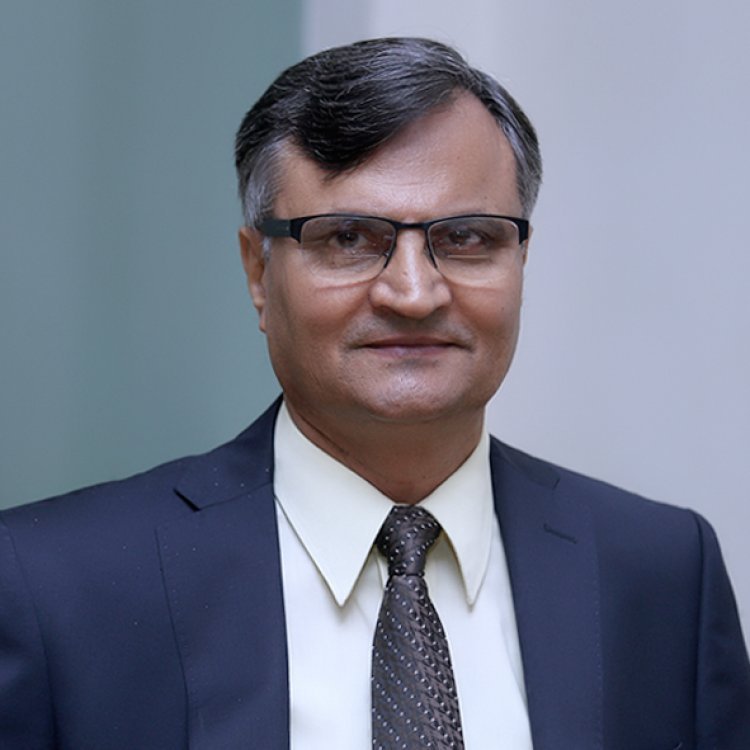
Prof. Ramesh Chand, Member, Niti Aayog, says that technology is getting complex in agriculture and modern science is increasingly being used in this sector. In such a scenario, it is imperative that the agricultural research institutes collaborate with the Indian Institutes of Technology (IITs) and other institutes that are working on new technology and adopt an interdisciplinary and global approach to meet the technological needs of the agriculture sector.
Besides, as far as possible, the sector should make use of the latest technology available across the world, Prof. Ramesh Chand says. The concept of swadeshi (indigenous) alone will not work here. Also, our scientists and institutes will have to work upon improving their performance in terms of being result-oriented. Prof. Chand says that against the target of investing 1-2 per cent of our Agricultural Gross Domestic Product (AGDP) in agricultural research, we are spending only about 0.5 per cent at present. At the same time, we should also see whether the amount being spent is giving better results. Prof. Ramesh Chand spoke about these in a video message given for the launch of the RuralVoice Agritech Show.
Emphasizing the use of new technology in agriculture, Prof. Chand says that new technologies need to be brought in from time to time for development in agriculture. If we do not keep up with the latest technology, we shall be left behind. He says, “Time was when even a minor technological change brought about a revolution, but today we can’t make agriculture progress with ordinary technology.”
The Niti Aayog member says, “In earlier times you could regale the audience merely by playing the flute, but today when people want music, they look for an orchestra, in which a number of musical instruments are required.” Similarly, it won’t suffice to use ordinary technology in agriculture. It has become necessary to use the most complex of technologies. Today, if we think that the mere research of a new crop variety will lead to growth in agriculture, we are grossly mistaken. For growth to happen, we shall have to research techniques and use them as per the current requirements. Times have changed and the most complex of technologies have made their way into agriculture, too. Which are knowledge- and capital-intensive. The world is witnessing a competition in technologies and our country, too, shall have to compete. For this, it is essential to go for state-of-the-art technologies and have knowledgeable scientists.
Another complexity in this field is the need for modern machinery, which entails a lot of expenditure. A third complexity is with regard to the transformation agriculture has undergone: Earlier, technology in agriculture was limited to this very sector and brought about sufficient gains. But now a host of other new sciences — for example, data science, nanotechnology, biotechnology — are being used in agriculture and delivering great results. If we consider the complexities of these technologies, the technological development in Indian agriculture and the expenditure on research and development (R&D) are not resulting in commensurate benefits. Although work has been done in the country on Basmati rice revolution, development of some fruits and recovery in sugarcane, it is not as much as is required for a comprehensive technological up-gradation in agriculture and for its being cost-effective. This aspect needs attention.
Prof. Ramesh Chand says that more of modern research is required for technological development in agriculture today. For this, the agricultural research institutes and universities need funds, but these are not adequately available. So, if we have to develop technologies, the budget for agricultural research will have to go up.
It has been contemplated for long that 2 per cent of AGDP should be spent on agricultural research, but the figure has never gone beyond 0.5 per cent. It is necessary to focus on the trio of production technology, protection technology and preservation technology for the growth and development of agriculture.
Prof. Ramesh Chand says that sometimes people begin to talk of swadeshi in our country. It is good to talk of indigenous technology, but people should not forget that CIMMYT (International Maize and Wheat Improvement Center), Mexico, had a big role to play in the wheat revolution in India, which led to rich yields of wheat in the country. Similarly, the International Rice Research Institute (IRRI), Philippines, contributed a lot to the increase in rice production in our country. Of course, we tuned the technology to our conditions.
Something similar is happening now in maize and some fruits. Therefore, we need to import and adopt the best technologies available abroad to give a fillip to growth in agriculture. For instance, in order to get good results for temperate fruits, we should go for plant material and plant propagation from abroad. We should import high-quality, high-yielding seeds and multiply them in our own country. This should not be made a prestige issue.
Agriculture scientists should now focus on interdisciplinary research and there should also be an improvement in the development of technological capability. For instance, if plants are getting 30 per cent of nutrients, how is it feasible to ratchet up this figure to 60 per cent? Work needs to be done on such a technology. Cooperation of other sciences should be sought for agricultural research, if required, for the sake of growth in agriculture. The agricultural research institutes should seek the cooperation of institutes like the IITs for sensor-based technologies as these are being used in agriculture today. And our agricultural research institutes are not sufficiently equipped to produce sensors that may meet the current requirements. Such cooperation will be immensely rewarding for agriculture.
Data science can help us achieve a lot in agriculture today. It will help not only in developing technology but also in delivering it to the farmer. Our prime minister says that we have been able to deliver our technology to a large number of farmers through broadband technology. If it has not reached the farmers, even this may be ascertained by digital technology. We should also utilize the developments in space technology for agriculture.
Understanding the seriousness of the complexities and challenges for technology in the present scenario, we should take our technological capabilities to an advanced level for the development of agriculture. The public sector as well as the private sector should be promoted. The agricultural research institutes should establish ties with other institutes of science. Scientists from our country should be sent to the best research labs of the world to get scientific knowledge and technical know-how. If we get good technology abroad, we should not hesitate to import it.



 Join the RuralVoice whatsapp group
Join the RuralVoice whatsapp group

















